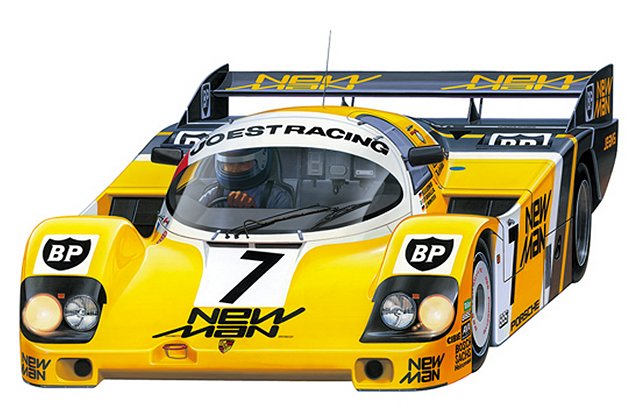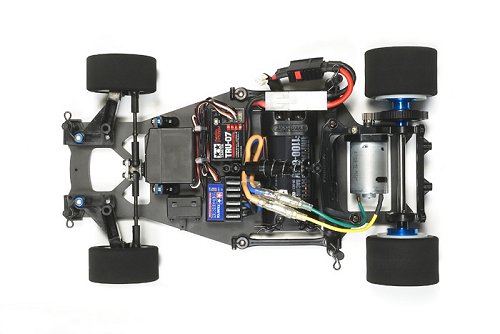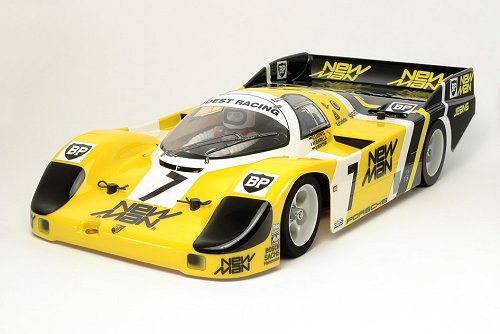

|


|
Tamiya Newman Joest Racing Porsche - 58521
|
Released by Tamiya on March 21, 2012, the Newman Joest Racing Porsche, that was originally released in 1985 (#58052), was based on a different version of the RM Chassis. This self assembly RC model, is of the Newman Porsche 956 by the Joest Racing Team, that won the 1984 Le Mans 24 Hours endurance race.
Thirty one years after the release of the first RM (Racing Master) Chassis, the all new RM Chassis is a totally different design. The RM-01 pan car configuration has the usual pan deck with a pivot ball braced lower deck to the rear and coil spring over friction pitch damper with a separate roll damper. The drive system employs a pressure plate ball differential on a steel shaft. A full set of steel shielded ball bearings are also supplied.

Up front, the steering servo is laid flat and to one side, allowing the track rods to be of equal length. One recommendation I would make is to obtain a better servo saver - the one supplied with this kit is not up to the task.
The motor in the kit is a 380 brushed type, ideal for beginners, but a little underpowered for the more experienced. Instructions for fitting a 540 motor are in the kit manual. Radio Equipment, M-Size 6.6V battery, charger, Electronic Speed Controller and paint for the body shell are required to complete.








|
|
|

|
|
Tamiya Newman Joest Racing Porsche #58521 RM-01 - Chassis
 |
|
Tamiya Newman Joest Racing Porsche #58521 RM-01
 |
Buying a Used Radio Controlled Model
|









|






|
|
|
|
Hints, Tips and Information How to Charge Rechargeable Batteries for Peak PerformanceNi-Cad (Nickel Cadmium) Batteries
1/ All Ni-Cad Batteries have to be Discharged soon after use. This is to avoid the dreaded "Memory" effect that on subsequent re-charges can cause a momentary drop in performance during a race. A simple discharger can be made from a car 12v bulb.
Ni-Mh (Nickel Metal Hydride) Batteries
1/ Never charge Ni-Mh batteries at a current higher than 4.5 amps. Although these batteries can give a higher voltage than Ni-Cad Batteries, they are much more sensitive and easy to damage if charged too quickly. |
|
Hints, Tips and Information Ball Differentials
Ball differentials were developed in the late 1980s to replace the high friction Gear differentials. Mainly used on Touring Cars, Pan Cars and Formula One Cars, Ball Differentials are designed to be totally frictionless and smooth in action to provide effortless drive to the wheels on cornering, where the inside wheels must rotate slower than the outside wheels for controlled stability.
|
|
RC Models:
|
Radio & Motors: |
Other
Accessories: |